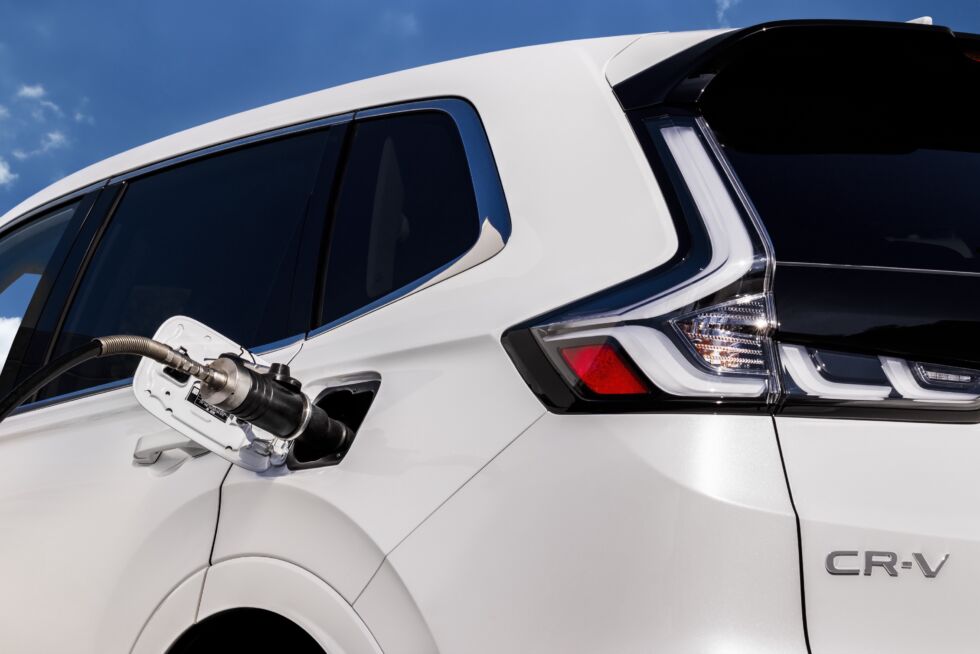The Honda CR-V e:FCEV is a plug-in fuel-cell hybrid nobody asked for
Honda
Hydrogen as a fuel source for light passenger vehicles is a tough sell in the US. It has a woefully underdeveloped refueling infrastructure in the US, being almost nonexistent outside of California, and even there, retail hydrogen stations are closing down. And hydrogen prices fluctuate like crazy, with recent costs hitting $33 per kilogram, when you can even get it. In short, it seems like a weird time for a company to introduce a new hydrogen fuel cell vehicle, but that’s just what Honda is doing with its awkwardly named CR-V e:FCEV.
The fuel cell CR-V is unique in a few ways that make it interesting, the biggest of which is that it’s effectively a plug-in hybrid, only instead of an internal combustion engine being paired with an electric drivetrain, this has a fuel cell powering a 17.7 kWh battery pack and a traction motor that bears more resemblance to one you’d find in an EV than in a traditional PHEV. Cool, right?
The biggest question that we have is simply why?
Honda’s answer is that this is part of a long-term plan to make hydrogen a more relevant fuel, not only for passenger vehicles, but also for heavy-duty vehicles, agriculture, and stationary backup power systems. That’s pretty bold when companies like Shell, formerly bullish on hydrogen, have stated that they won’t continue investing in the fuel.

Honda
The FCEV pairs the aforementioned 17.7 kWh battery with a single front-mounted electric motor which is good for 174 hp (130 kW) and 229 lb-ft (140 Nm) of torque. That’s not exactly going to blow anyone’s socks off, especially compared to the standard hybrid model’s 204 hp (152 kW). Part of that battery capacity is used as a buffer for the fuel cell in place of the previous Clarity FCV’s supercapacitor.
This vehicle introduces a new and more efficient generation of fuel cell for Honda, which it co-developed with General Motors, and according to the EPA, this CR-V will go 270 miles (434 km) on a full tank of hydrogen and a fully charged battery. Honda also claims that the new fuel cell should be twice as durable as the previous version found in the Clarity FCV thanks to the use of new, more corrosion-resistant materials.
Apart from all the concerns about future viability and fuel availability, what is the CR-V e:FCEV like to actually drive? Well, the good news is that it drives like a CR-V (mostly), albeit one with a few quirks.
The first thing that becomes obvious once underway is that the FCEV is heavier than the CR-V Hybrid we get here in the US—a full 500 lbs (227 kg) heavier, according to Honda engineers. That weight isn’t necessarily a bad thing, though. The standard CR-V isn’t exactly known for cornering like a Civic Type-R, so while the FCEV feels slower to react to inputs, it also feels more composed and solid around town.

Honda
That weight also makes its presence known under braking. Even when slowing from around-town speeds, you’re definitely applying more pressure to the pedal than you do with the regular hybrid. Braking performance is helped somewhat by regenerative braking, which is controlled by some very nice metal paddles on the steering wheel. There is no one-pedal driving, and the regen resets itself rather quickly once you set off again, but it’s better than nothing.
Source link
